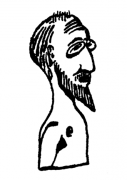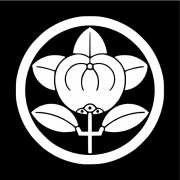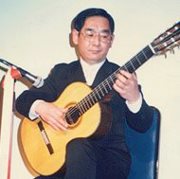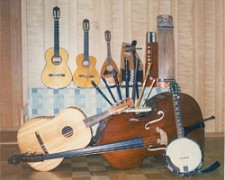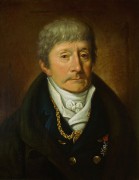- Home
- Paris の検索結果
Paris の検索結果: 25 件
エリック・サティ(Erik Satie)について
エリック・サティ(Erik Satie)について
誕生日 5月17日 / 1866年 エリック・サティ (仏:作曲家) Erik Satie
関連記事
エリック・アルフレッド・レスリ・サティ(Erik Alfred Leslie Satie、1866年5月17日 – 1925年7月1日)は、フランスの作曲家。音楽界の異端児、音楽界の変わり者などと称される。西洋音楽に大きな影響を与えたと見なされており、ドビュッシー、ラヴェルも影響を公言している。そして、印象主義の作曲家たちにも影響を与えたとされる。生涯 / 1866年 – 5月17日オンフルールにて誕生。(エリック・サティ – Wikipedia)
Éric Alfred Leslie Satie (French: [eʁik sati]; 17 May 1866 – 1 July 1925), who signed his name Erik Satie after 1884, was a French composer and pianist. Satie was a colourful figure in the early 20th-century Parisian avant-garde. His work was a precursor to later artistic movements such as minimalism, Surrealism, repetitive music, and the Theatre of the Absurd. (Erik Satie – Wikipedia)
関連エントリ
ツイッター( Twitter)
フェイスブック (Facebook)
アントニオ・サリエリ(Antonio Salieri)について
アントニオ・サリエリ(Antonio Salieri)について
関連記事
アントニオ・サリエリ(Antonio Salieri、1750年8月18日 – 1825年5月7日)はイタリアのレニャーゴ生まれの作曲家。生前は神聖ローマ皇帝・オーストリア皇帝に仕えるカペルマイスター(宮廷楽長)としてヨーロッパ楽壇の頂点に立つ人物であり、またベートーヴェン、シューベルト、リストらを育てた名教育家でもあった。死後はその名と作品を忘れられたが、戯曲『アマデウス』(1979年)およびその映画版(1984年)の主人公として取り上げられたため、知名度が上昇。2003年に大メゾソプラノ歌手チェチーリア・バルトリがアルバムを出すなど、21世紀に入ってからは音楽家としての再評価の動きもあり、2009年からは生地レニャーゴでサリエリ・オペラ音楽祭が毎年開催されている。(アントニオ・サリエリ – Wikipedia)
Antonio Salieri (18 August 1750 – 7 May 1825) was an Italian classical composer, conductor, and teacher. He was born in Legnago, south of Verona, in the Republic of Venice, and spent his adult life and career as a subject of the Habsburg Monarchy. Salieri was a pivotal figure in the development of late 18th-century opera. As a student of Florian Leopold Gassmann, and a protégé of Christoph Willibald Gluck, Salieri was a cosmopolitan composer who wrote operas in three languages. Salieri helped to develop and shape many of the features of operatic compositional vocabulary, and his music was a powerful influence on contemporary composers. Appointed the director of the Italian opera by the Habsburg court, a post he held from 1774 until 1792, Salieri dominated Italian-language opera in Vienna. During his career he also spent time writing works for opera houses in Paris, Rome, and Venice, and his dramatic works were widely performed throughout Europe during his lifetime. As the Austrian imperial Kapellmeister from 1788 to 1824, he was responsible for music at the court chapel and attached school. Even as his works dropped from performance, and he wrote no new operas after 1804, he still remained one of the most important and sought-after teachers of his generation, and his influence was felt in every aspect of Vienna’s musical life. Franz Liszt, Franz Schubert, and Ludwig van Beethoven were among the most famous of his pupils. Salieri’s music slowly disappeared from the repertoire between 1800 and 1868 and was rarely heard after that period until the revival of his fame in the late 20th century. This revival was due to the dramatic and highly fictionalized depiction of Salieri in Peter Shaffer’s play Amadeus (1979) and its 1984 film version. The death of Wolfgang Amadeus Mozart in 1791 at the age of 35 was followed by rumours that he and Salieri had been bitter rivals, and that Salieri had poisoned the younger composer, yet it is likely that they were, at least, mutually respectful peers. (Antonio Salieri – Wikipedia)
関連エントリ
Antonio Salieri の検索結果 ー 美幌音楽人 加藤雅夫
ツイッター( Twitter)
フェイスブック (Facebook)
Narciso Yepes ナルシソ・イエペス の捧げもの
Narciso Yepes ナルシソ・イエペス の捧げもの
関連記事
Narciso Yepes (14 November 1927 – 3 May 1997) was born into a family of humble origin in Lorca, Region of Murcia. His father gave him his first guitar when he was four years old, and took the boy five miles on a donkey to and from lessons three days a week. Yepes took his first lessons from Jesus Guevara, in Lorca. Later his family moved to Valencia when the Spanish Civil War started in 1936. On 16 December 1947 he made his Madrid début, performing Joaquín Rodrigo’s Concierto de Aranjuez with Ataúlfo Argenta conducting the Spanish National Orchestra. The overwhelming success of this performance brought him renown from critics and public alike. Soon afterwards, he began to tour with Argenta, visiting Switzerland, Italy, Germany, and France. During this time he was largely responsible for the growing popularity of the Concierto de Aranjuez, and made two early recordings, both with Argenta[6] – one in mono with the Madrid Chamber Orchestra (released between 1953 and 1955), and the second in stereo with the Orquesta Nacional de España (recorded in 1957 and released in 1959). On 18 May 1951, as he leant on the parapet of a bridge in Paris and watched the Seine flow by, Yepes unexpectedly heard a voice inside him ask, “What are you doing?” He had been a nonbeliever for 25 years, perfectly content that there was no God or transcendence or afterlife. But that existential question, which he understood as God’s call, changed everything for him. He became a devout Catholic, which he remained for the rest of his life. In 1952 a work (”Romance”), Yepes claims to have written when he was a young boy,[10] became the theme to the film Forbidden Games (Jeux interdits) by René Clément. Despite Yepes’s claims of composing it, the piece (”Romance”) has often been attributed to other authors; indeed published versions exist from before Yepes was even born[citation needed], and the earliest known recording of the work dates from a cylinder from around 1900.[citation needed] In the credits of the film Jeux Interdits, however, “Romance” is credited as “Traditional: arranged – Narciso Yepes.” Yepes also performed other pieces for the Forbidden Games soundtrack. His later credits as film composer include the soundtracks to La Fille aux yeux d’or (1961) and La viuda del capitán Estrada (1991). He also starred as a musician in the 1967 film version of El amor brujo. In Paris he met Maria Szumlakowska, a young Polish philosophy student, the daughter of Marian Szumlakowski, the Ambassador of Poland in Spain from 1935 to 1944. They married in 1958 and had two sons, Juan de la Cruz (deceased), Ignacio Yepes, an orchestral conductor and flautist, and one daughter, Ana Yepes, a dancer and choreographer. In 1964, Yepes performed the Concierto de Aranjuez with the Berlin Philharmonic Orchestra, premièring the ten-string guitar, which he invented in collaboration with the renowned guitar maker José Ramírez III. After 1964, Yepes used the ten-string guitar exclusively, touring all six inhabited continents, performing in recitals as well as with the world’s leading orchestras, giving an average of 130 performances each year. He recorded the Concierto de Aranjuez for the first time with the ten-string guitar in 1969 with Odón Alonso conducting the Orquesta Sinfonica R.T.V. Española. Apart from being a consummate musician, Yepes was also a significant scholar. His research into forgotten manuscripts of the sixteenth and seventeenth centuries resulted in the rediscovery of numerous works for guitar or lute. He was also the first person to record the complete lute works of Bach on period instruments (14-course baroque lute). In addition, through his patient and intensive study of his instrument, Narciso Yepes developed a revolutionary technique and previously unsuspected resources and possibilities. He was granted many official honours including the Gold Medal for Distinction in Arts, conferred by King Juan Carlos I; membership in the Academy of “Alfonso X el Sabio” and an Honorary Doctorate from the University of Murcia. In 1986 he was awarded the Premio Nacional de Música of Spain, and he was elected unanimously to the Real Academia de Bellas Artes de San Fernando. In the 1980s, Yepes formed Trio Yepes with his son Ignacio Yepes on flute and recorder and his daughter Ana dancing to her own choreography. After 1993, Narciso Yepes limited his public appearances due to illness. He gave his last concert on 1 March 1996 in Santander (Spain). He died in Murcia in 1997, after a long battle with lymphoma. (Narciso Yepes – Wikipedia)
ナルシソ・イエペス(Narciso Yepes、1927年11月14日 – 1997年5月3日)はスペインのギタリスト、作曲家。ナルシソ・ジェペスとも表記される。来歴 / スペインのムルシア地方のロルカ近郊の農家に生まれた。4歳の時に初めてギターに触れ、ロルカの音楽アカデミーでギターを学び、その後バレンシア音楽院に進んでギターや作曲を学んだ。ここで、作曲家のビセンテ・アセンシオ教授に大きな影響を受ける。また、マドリード音楽院では、サインス・デ・ラ・マーサにギターを師事した。1947年12月17日スペイン劇場でのスペイン国立管弦楽団の定演コンサートに名指揮者アタウルフォ・アルヘンタにより招かれ、ロドリーゴのアランフエス協奏曲を演奏した。その後に行われたパリやジュネーヴなどでの演奏会の成功で、イエペスの名はヨーロッパ中に知れ渡った。1952年に、パリのカフェで映画監督のルネ・クレマンと偶然知り合い、「映画自体はすでに撮ってあるが、どんな音楽をつけたらよいか決めかねているので、映画のための音楽を担当してほしい」と監督から依頼を受ける。当初、アンドレス・セゴビアに音楽を担当してもらう予定だったが、すでに映画制作の為の予算を使い果たしており、セゴビアとは制作費の折り合いがつかず、当時まだ新人であったイエペスに音楽担当の依頼をする事となった。 そこで、24歳のイエペスは映画『禁じられた遊び』の音楽の編曲・構成、演奏を1本のギターだけで行った。そして、その映画が公開されると、メインテーマ曲「愛のロマンス」が大ヒットし、世界的に有名なギタリストとなった。それから世界各地でリサイタルやオーケストラとの共演を行い、日本にも1960年から1996年までの間に計17回訪問した。1964年からは、ホセ・ラミレス3世と共同で通常より音域の広い10弦ギターを開発した。演奏の軽快さが多少犠牲になり、一部では批判もあったが、均一な共鳴をもつ透明度の高い音色を実現し、多くの音楽愛好家に受け入れられた。1989年4月スペイン芸術院のサン・フェルナンド王立アカデミーの会員に任命された。これはサインス・デラマーサ、アンドレス・セゴビアに続く3人目の栄誉である。1990年頃に、悪性リンパ腫に冒されている事が発覚し、1993年には医師から演奏活動の中止を忠告されたが、その後も演奏活動を続けた。だが、1996年3月にサンタンデール音楽祭に出演したのが最後のステージとなり、1997年5月3日に69歳で死去した。イエペスの信念である「芸術は神のほほえみである」の名のもとに10弦ギターで世界各地を演奏活動して回ったことにより、日本はもとより全世界で圧倒的な人気を誇り、なお且つ世界各地に及ぼした音楽的影響の高さはひときわ抜きん出ていた。レパートリーの広さ(バッハのリュート組曲におけるバロック・リュートの演奏、テレサ・ベルガンサとの歌の伴奏、世界各地のオーケーストラとのギターコンチェルトによる共演、フェルナンド・ソルの練習曲集の演奏、カタルーニャ地方の民謡を集めた曲集の演奏、ラテン系の近代・現代の作曲家の作品の10弦ギターによる演奏、弟子のモンダンとの二重奏、「トリオ・イエペス」による親子の共演等 )も、来日回数も、他の追随を許さぬものがあり、年間120回にもおよぶ演奏会を30年近く世界各地で行い、今までに録音したレコードの枚数も50枚を超えた(1967年から1989年まではドイツ・グラモフォン専属となった)。日本国内での代表的な弟子として、荘村清志、芳志戸幹雄、小原聖子等がいる。イエペスには数々の栄誉が与えられており、代表的なものとしてムルシア大学名誉博士号、イサベル・ラ・カトリカ十字章、スペイン国王から芸術功労金メダル、スペイン文化賞からスペイン音楽大賞、スペイン作曲家協会賞、国営テレビ局大賞等がある。(ナルシソ・イエペス – Wikipedia)
関連サイト
Narciso Yepes Official Homepage (ナルシソ·・イエペス公式ホームページ)
Ana Yepes (アナ・イエペス)| earlydance.org
関連エント
Narciso Yepes の検索結果 ー 美幌音楽人 加藤雅夫
ツイッター( Twitter)
フェイスブック (Facebook)
ナルシソ・イエペスの娘 アナ・イエペス(Ana Yepes)
ナルシソ・イエペスの娘 アナ・イエペス(Ana Yepes)
1993年の11月17日、イエペス・トリオの北海道公演(旭川市公会堂)。ナルシソ・イエペス、イエペス夫人のマリーシヤ・イエペス、息子夫妻のイグナシオ・イエペス、娘のアナ・イエペスと楽しい食事会でした。これが、ナルシソ・イエペスと最後のお別れになってしまつた。アナ・イエペスとは今でも交流が続いている。
関連記事
Narciso Yepes (14 November 1927 – 3 May 1997) was a Spanish guitarist. In Paris he met Marysia Szumlakowska, a young Polish philosophy student. They married in 1958 and had two sons, Juan de la Cruz (deceased), Ignacio Yepes, an orchestral conductor and flautist, and one daughter, Ana Yepes, a dancer and choreographer. (Narciso Yepes – Wikipedia)
関連サイト
ナルシソ·・イエペス公式ホームページ(Narciso Yepes Official Homepage)
関連エントリ
クラウドファンディング – アナ・イエペス (Ana Yepes) ー 美幌音楽人 加藤雅夫
ツイッター( Twitter)
フェイスブック (Facebook)
チャップリンの モダンタイムス (映画、言葉、音楽)
死と同じように避けられないものがあります。それは生きることです。
There are things that can not be avoided in the same way as death. It is to live.
チャップリンの モダンタイムス (映画、言葉、音楽)
Modern Times of Chaplin (movies, words, music)
「イスラエル関連文化事業案内」 (2014年 8月22日)
東京にあるイスラエル大使館文化部からのメールマガジンです。
「イスラエル関連文化事業案内」 (2014年 8月22日)
“Israel-related culture Business Information” (August 22, 2014)
「イスラエル関連文化事業案内」 (2014年 7月11日)
東京にあるイスラエル大使館文化部からのメールマガジンです。
「イスラエル関連文化事業案内」 (2014年 7月11日)
“Israel-related culture Business Guide” (July 11, 2014)
2014年、OECDに加盟50周年。(日本の 外務省から)
経済協力開発機構
Organisation for Economic Co-operation and Development
(OECD)
外務省(MOFA)のメールマガジン「わかる!国際情勢」第73号(2014年2月24日発行)が送られてきました。
日本及び世界各地の皆様へお知らせいたします。
- Home
- Paris の検索結果










